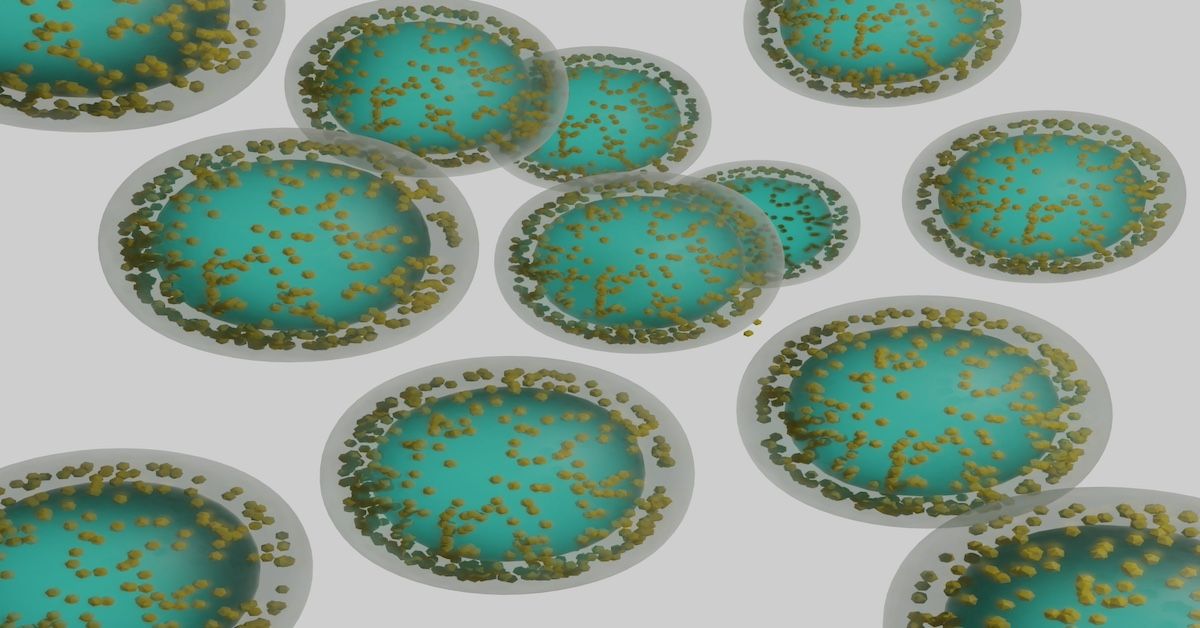News
Article
Advances in Colon Cancer: Delivering Dual-mRNA With Lysate-Based Nanoparticles
Author(s):
Building on prior research, a team tackled mouse-model colon cancer with a novel nonviral nanovector to carry dual–messenger RNA (mRNA) immunogene therapy.
A novel nonviral nanovector is a highly efficient delivery system for dual–messenger RNA (mRNA) immunogene therapy against colon cancer, suggest the results of recent mouse-model research. In the International Journal of Nanomedicine, investigators described this nanovector, which they have termed the CLSV system (CLS: CT26 tumor cell lysate, V: nanovector).1
mRNA-based immunogene therapy is a promising emerging tumor therapy approach, they explained, but it’s important to deliver it efficiently and effectively to stimulate optimal antitumor immune responses. Few previous studies have focused on the realization of dual-mRNA delivery, they added.
The team noted 2 major principles underlying their research. First, tumor cell lysates containing both tumor-specific antigens and biomarkers can trigger a stronger immune response to tumors. Second, strategies that involve multiple gene therapies may offer the best paths to treat tumors, by delivering genes with different functions.2
Ultimately, said the authors, their CLSV system delivered 2 mRNAs (EGFP/mCherry) and enhanced tumor immunogene therapy through tumor cell lysates, resulting in significant activity against subcutaneous and intraperitoneal colon cancer in multiple CT26 mouse models.
Building on foundations. “The primary challenges in dual-gene delivery include ensuring the efficient conveyance of both genes and safeguarding the binding and stability of nucleic acid molecules of varying lengths,” the investigators explained. “Overcoming these hurdles primarily centers on delivery vectors.”
The CLSV system was based on an earlier effective mRNA delivery system called DOTAP-mPEG-PCL (DMP). DMP, the researchers said, was formed through the self-assembly of 1.2-dioleoyl-3-trimethylammonium-propane (DOTAP) and methoxypoly (ethylene glycol)-b-poly (ϵ-caprolactone) (mPEG-PCL). To metamorphose DMP into the CLSV system, the team introduced a fused cell-penetrating peptide into the framework and encapsulated tumor cell lysates.
Outcomes. The investigators noted that the CLSV system effectively activated the immunity mechanisms in the mice, including dendritic cells, to mature, leading to antitumor immune responses. In operation, as the CLSV system efficiently delivered 2 mRNAs simultaneously, the transfection efficiency of EGFP and mCherry mRNA was 69% and 60% in CT26 cells, respectively.
“Meanwhile, the CLSV system could introduce mRNA into cells through fossa protein-mediated endocytosis to achieve codelivery of double mRNA molecules,” they described. In vitro, Bim and interleukin-23 mRNA were delivered simultaneously to CT26 cells, andin vivo, CLSV/dual-mRNA complex surpassed the anticancer effects achieved by single-gene delivery.
The lysate lowdown. Researchers have been trying for some time to “harness and maximize the immune-stimulatory effects of lysates” to attack tumors, but lysates’ inherent complexity has been a huge hurdle, said the team. Their novel idea was to wrap CT26 tumor cell lysate into the DMP of their CLSV system.
mRNA-based immunogene therapy must be delivered efficiently and effectively to stimulate optiman antitumor response | Image Credit: Love Employee-stock.adobe.com

Additionally, they advantageously used cationic nanoparticles to deliver the lysates. With positive charge, CLSV “could not only slow the dissociation and diffusion of tumor cell lysate from the surface of the nanoparticle through the effect of electrostatic adsorption, but [it] could also delay the antigen release rate.” A controlled release promotes more uniform dispersion and stabilization of a lysate’s complex components. This in turn prevents the antigens from clearing too rapidly, and it beneficially extends their exposure to the immune system, the authors noted.
When they have appropriate size and surface properties, “cationic nanoparticles based on the CLSV skeleton [can] extend the circulation time and effectively deliver tumor cell lysates to antigen-presenting cells, such as dendritic cells,” explained the investigators. This, they emphasized, is critical to initiate and direct the immune response against cancer.
References
1. Wang K, Gao Y, Wu S, et al. Dual-mRNA delivery using tumor cell lysate-based multifunctional nanoparticles as an efficient colon cancer immunogene therapy.Int J Nanomedicine. 2024;19:4779-4801.doi:10.2147/IJN.S452548
2. Lei S, Gao Y, Li J, et al. Dual-RNA controlled delivery system inhibited tumor growth by apoptosis induction and TME activation. J Control Release. 2022;344:97-112. doi:10.1016/j.jconrel.2022.02.022




